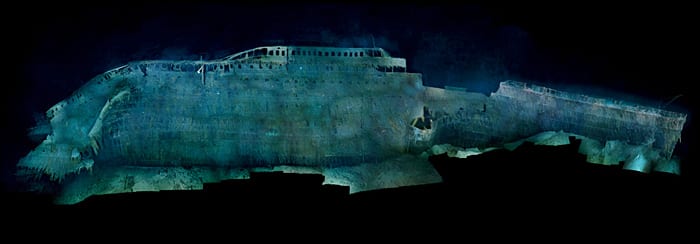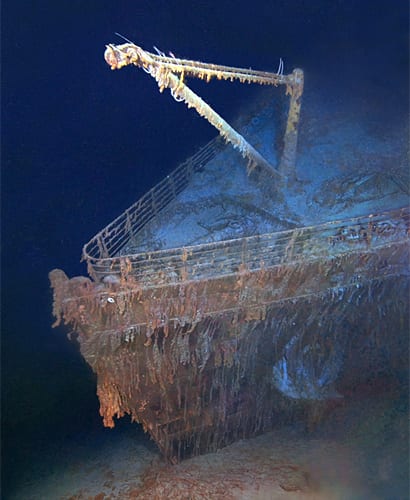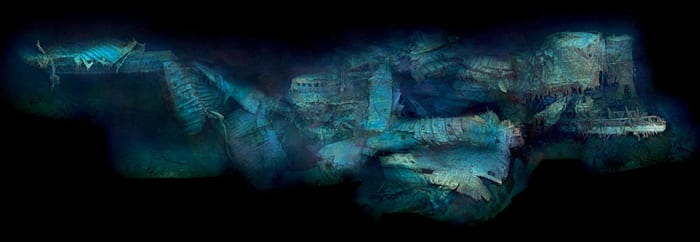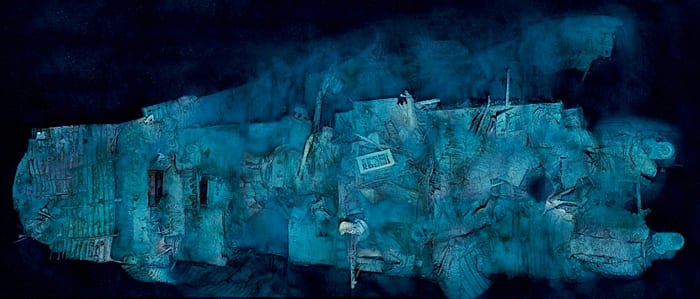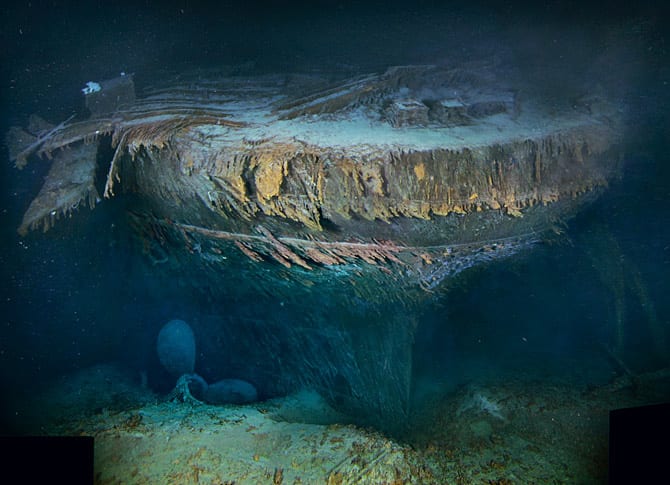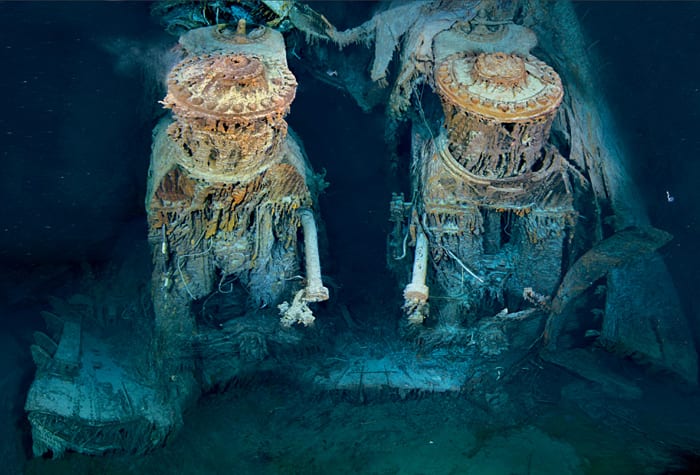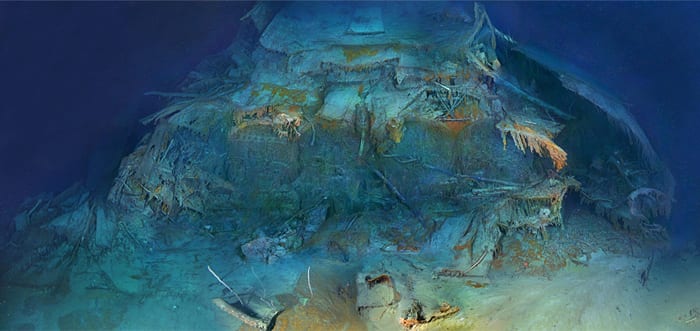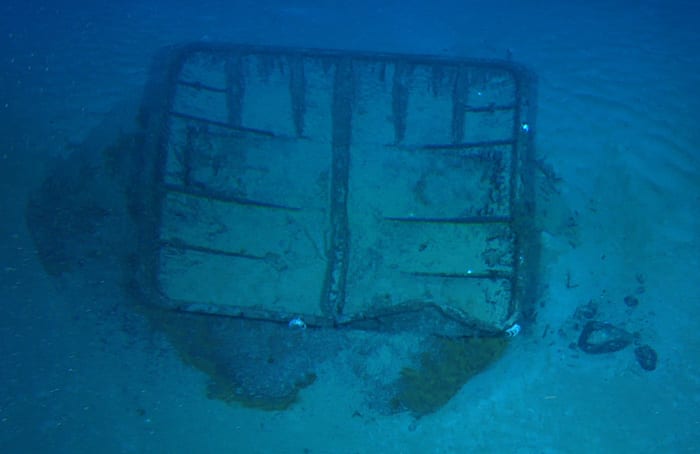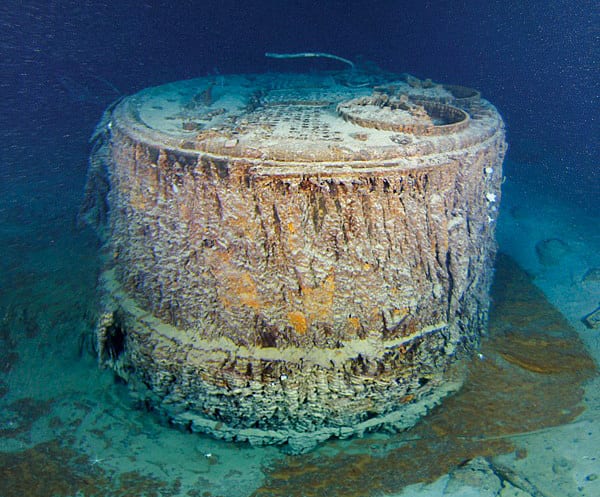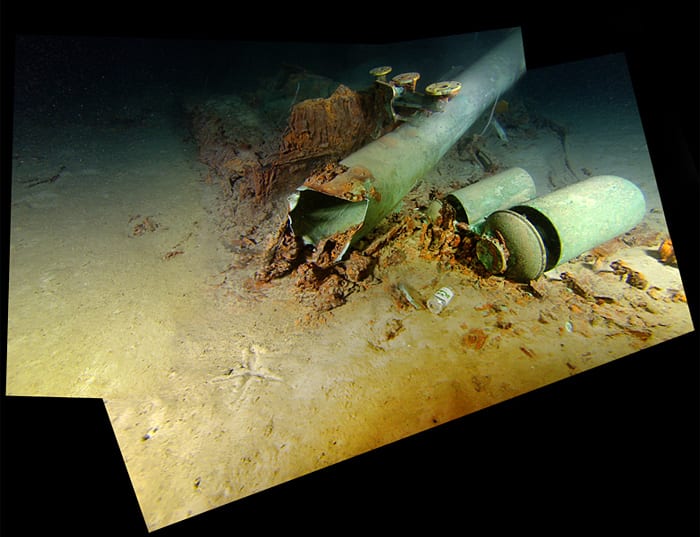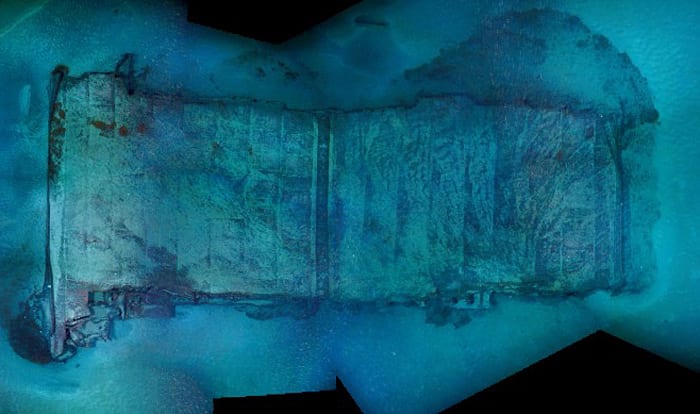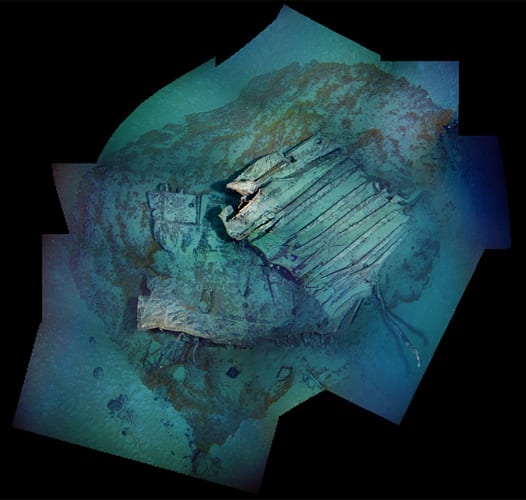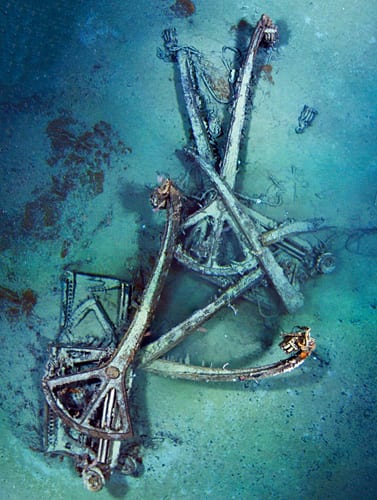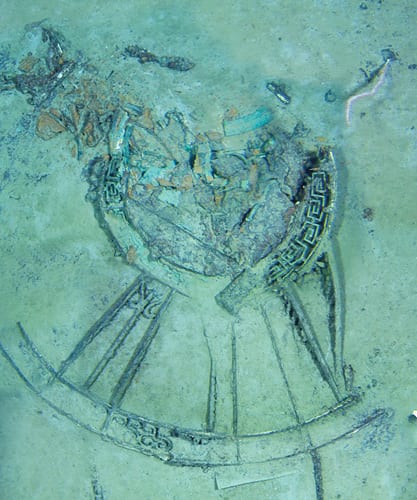Titanic in a New Light
- A profile mosaic of the bow section shows some of the structural damage that occurred when the ship struck an iceberg on April 15, 1912. Most of the damage remains buried under the mound of clay-like sediment to the right. (©2012 RMS Titanic, Inc. Produced by AIVL, WHOI)
- Wide-angle depictions of the Titanic's have previously been limited to artists' interpretations. This oblique view is comprised of hundreds of images that were stitched together. Post processing of the optical data was funded by Premier Exhibitions Inc. and the National Geographic Society. (©2012 RMS Titanic, Inc. Produced by AIVL, WHOI)
- This mosaic, consisting of thousands of individual still images stitched together, provides a never-before-seen view of the starboard side of Titanic's heavily damaged stern section. (©2012 RMS Titanic, Inc. Produced by AIVL, WHOI)
- Looking down on the stern reveals significant structural damage caused when the ship broke apart and sank and degradation that has occurred after 100 years on the seafloor. Approximately 1,500 images were stitched together to make this high-resolution mosaic. (©2012 RMS Titanic, Inc. Produced by AIVL, WHOI)
- The aft end of Titanic's keel is deeply embedded in thick, clay-like sediment 12,000 feet below the surface of the North Atlantic. The port propeller is also visible in this view. (©2012 RMS Titanic, Inc. Produced by AIVL, WHOI)
- The forward, open end of the stern section reveals two of the ship's massive engines, which are still in place in the engine room. Large rusticles now hang from these four-story structures. (©2012 RMS Titanic, Inc. Produced by AIVL, WHOI)
- This part of the ship had not been documented prior to the RMST-organized 2010 expedition. The unprecedented view shows the five double-ended boilers that are still in place in boiler room #2. Post processing of the optical data was funded by Premier Exhibitions Inc. and the National Geographic Society. (©2012 RMS Titanic, Inc. Produced by AIVL, WHOI)
- Compared to the stern, the bow remains relatively in tact. This mosaic, which consists of approximately 1,500 high-resolution still images, reveals structural changes that have occurred to the bow section since the last effort to mosaic the wreck. (©2012 RMS Titanic, Inc. Produced by AIVL, WHOI)
- The #1 cargo hatch detached from the forward deck of Titanic and now rests on the seafloor in front of the bow. (©2012 RMS Titanic, Inc. Produced by AIVL, WHOI))
- When the Titanic broke apart, this 57-ton boiler fell from the ship's engine room. Nearly 16 feet in diameter and 12 feet tall, it rests in a dense field debris to the east of the stern section. (©2012 RMS Titanic, Inc. Produced by AIVL, WHOI)
- These whistles are the only identifiable remains of the #2 funnel. There were four sets of whistles on the Titanic but only those on the #1 and #2 funnels were operational. The whistles on the #3 and #4 funnels were for aesthetic purposes only. Post processing of the optical data was funded by Premier Exhibitions Inc. and the National Geographic Society. (©2012 RMS Titanic, Inc. Produced by AIVL, WHOI)
- Large pieces of the ship's double bottom keel—once thought to be impregnable—also lay in the artifact field. (©2012 RMS Titanic, Inc. Produced by AIVL, WHOI)
- The Titanic artifact field is strewn with unidentified pieces of the ship. This mosaic represents one of the many yet-to-be-identified fragments. Post processing of the optical data was funded by Premier Exhibitions Inc. and the National Geographic Society. (©2012 RMS Titanic, Inc. Produced by AIVL, WHOI)
- These double-acting davits were most likely lowering lifeboats into the water before the ship sank. Although there were enough davits to handle up to 64 lifeboats, the Titanic famously carried only 20 when it set sail on its maiden voyage from Southampton, U.K., to New York on April 10, 1912. (©2012 RMS Titanic, Inc. Produced by AIVL, WHOI)
- A fragment of the Titanic's iconic dome rests in the artifact field among pipes, shell plating, davits, engine cylinders, and countless small items such as pots and dishes. The grand staircase has come to represent the opulence of both the ship and the Edwardian period. (©2012 RMS Titanic, Inc. Produced by AIVL, WHOI)
TOPICS: RMS Titanic
Image and Visual Licensing
WHOI copyright digital assets (stills and video) contained on this website can be licensed for non-commercial use upon request and approval. Please contact WHOI Digital Assets at images@whoi.edu or (508) 289-2647.

